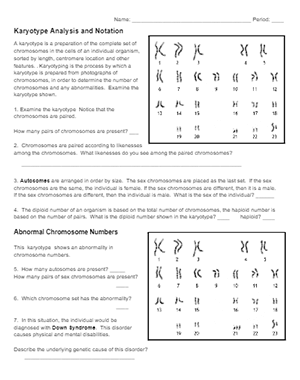
Students first encounter chromosomes in the chapter on mitosis. In early lessons, the focus is on how the chromosomes line up along the equator and are then pulled to opposite poles. The new cells should have the same number of chromosomes as the original parent cell.
Later, they learn that chromosomes contain genetic information. One chromosome from a pair came from the father and the other from the mother. Students discover another type of cell division – meiosis. Meiosis can be difficult for students, there’s just a lot going on with prophase 1.
Unlike mitosis, the chromosomes pair up to form a tetrad, exchange information and then separate. The new cells will contain half of the chromosomes of the parent. What happens if there is an error in the separation?
Nondisjunction can result in a newly formed cell having one too many (trisomy) or one too few (monosomy). The error in chromosome numbers can cause the resulting offspring to have a disorder, like Down syndrome. These disorders can by diagnosed by examining the number of chromosomes in a cell and using a visual tool called a karyotype.
Other Karyotype Activities

I have used many activities to help students learn how to analyze karyotypes. The following list shows a variety of karyotype activities I have used over the years. Some are more involved than others, and I choose based on simple pre-test to determine what my students already know.
How to Interpret a Karyotype – This simple worksheet shows a normal karyotype and two abnormal ones (Down and Edward Syndromes). Students compare diploid and haploid numbers. ~20 minutes
Karyotype Analysis Slides – Using Google slides, students drag and drop chromosomes to a grid then compare normal to abnormal chromosome numbers. ~45 minutes
A Chromosome Study – Students receive a set of jumbled chromosomes, cut each and arrange them to form a karyotype, comparing a normal to abnormal set. ~ 1.5 hours
Karyotype of Tasmanian Devil Chromosomes – Students cut a paste chromosomes from Tasmanian devils. They have a diploid number of 14, so this is a shorter exercise than the human chromosome study. ~45 minutes

